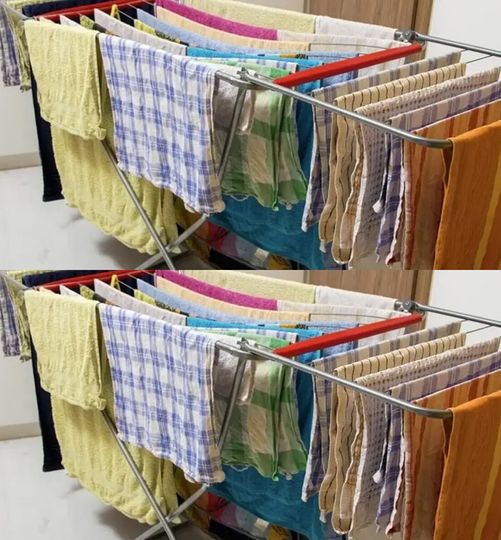ADVERTISEMENT
### **4. Energy Consumption and Environmental Impact**
Using a dryer at home not only adds to your electricity bill but also contributes to your household’s carbon footprint. Dryers consume a large amount of energy to dry clothes, and using them regularly can lead to higher energy costs. If you are looking to reduce your environmental impact, it’s best to limit indoor drying methods that require energy-intensive machines.
### **5. Bad Odors and Poor Air Quality**
When you dry laundry indoors, especially in poorly ventilated spaces, your clothes may develop unpleasant smells. The moisture trapped in the room can combine with other airborne pollutants, creating musty, damp odors that can stick to your clothes. Over time, these smells can permeate your home, leading to a stale, unclean atmosphere.
### **Better Alternatives to Drying Laundry at Home**
While drying laundry at home may seem convenient, there are several alternatives that can mitigate the risks mentioned above:
1. **Drying Clothes Outdoors**: If you have the space, hang your clothes outside on a clothesline. Fresh air and sunlight naturally dry clothes faster while eliminating the excess moisture from your indoor space. The sun also helps to bleach and disinfect your clothes, naturally removing stains and odors.
2. **Use a Dryer with Proper Ventilation**: If you do need to use a dryer indoors, ensure it’s vented to the outside properly. This will prevent moisture from accumulating in your home. Regularly clean the lint filter and dryer vent to reduce the fire risk.
3. **Use a Dehumidifier**: If you must dry clothes indoors, consider using a dehumidifier. This will help reduce the excess moisture in the air, preventing mold growth and keeping your living space comfortable. It’s a great way to protect your home while still drying clothes indoors.
4. **Invest in an Indoor Drying Rack**: For delicate items or smaller loads, an indoor drying rack can be an effective way to air-dry clothes without using a dryer. Place the rack in a well-ventilated room or near an open window to promote airflow and prevent the buildup of moisture.
5. **Make Use of a Ventilated Room**: If drying clothes indoors is necessary due to weather conditions, choose a well-ventilated room, preferably with an exhaust fan or window to encourage air circulation. This will help the clothes dry faster and minimize humidity buildup.
### **Conclusion**
Drying laundry at home, particularly indoors, can lead to various hidden problems such as increased humidity, mold growth, fabric damage, and higher energy consumption. To avoid these issues and preserve both your home and your clothes, consider alternative methods like outdoor drying, using a properly vented dryer, or utilizing dehumidifiers and indoor drying racks. By making these adjustments, you’ll create a healthier, more sustainable laundry routine that benefits both your living space and your wallet in the long run.
ADVERTISEMENT
